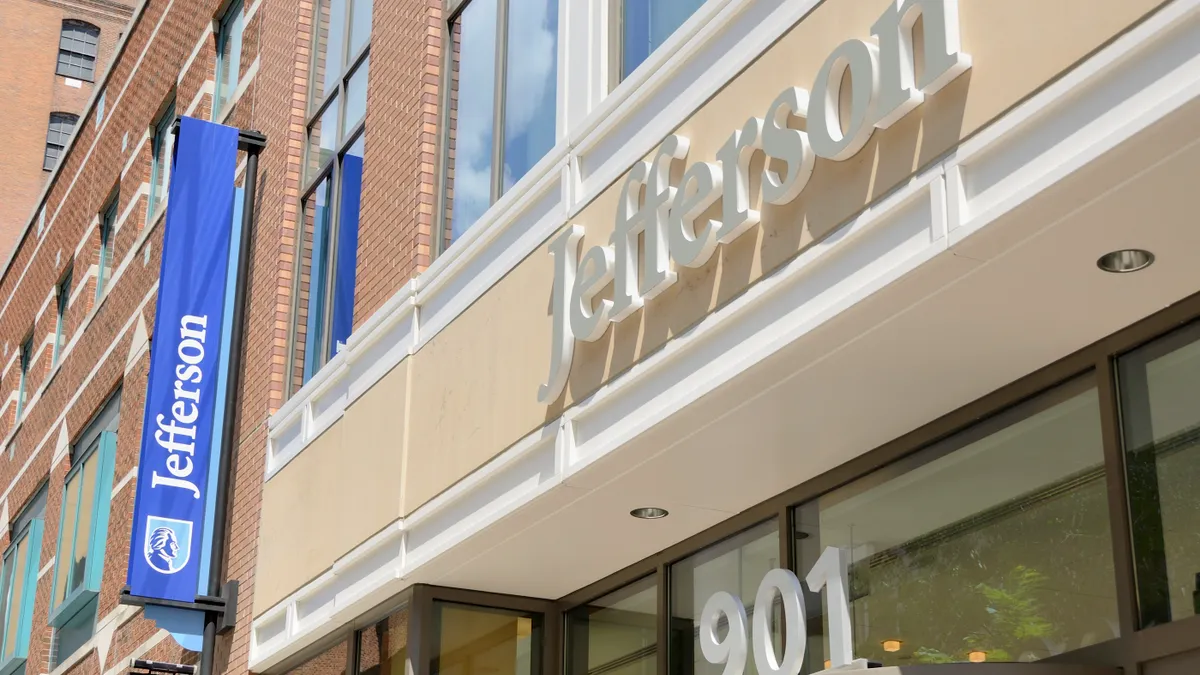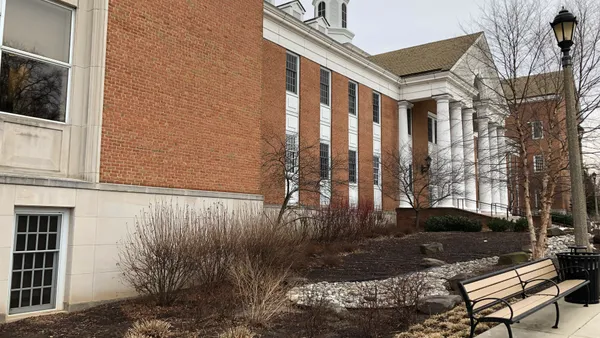Dive Brief:
- In the span of a year, 47 students from Pennsylvania's community colleges transferred to online giant Southern New Hampshire University through an articulation agreement finalized in 2020.
- The number does not encompass all students who transferred from the two-year schools to the university from January 2020 to January 2021, the period tracked.
- Policy and financial experts forecasted the agreement, which provides discounted tuition, would cut into enrollment at the state's four-year schools, potentially boosting competition among them.
Dive Insight:
SNHU, which boasts one of the largest online enrollments in the U.S., signed the transfer agreement to much fanfare in January 2020. It allows students from Pennsylvania's 14 community colleges to transfer up to 90 credits to the university to complete their bachelor's degrees online with a 10% tuition discount from SNHU's typical rate.
Jennifer Batchelor, who is now the interim senior vice president of SNHU's Global Campus, said in a statement at the time that the deal would allow students to continue their "transformational journey."
Critics, however, pointed out the possibility it would siphon community college students from the state's four-year colleges, particularly among schools in Pennsylvania's State System of Higher Education, many of which are in tough financial straits in part because of steadily declining enrollment. (The system is currently pushing to consolidate six of its institutions into two.)
Shortly after the agreement was announced, Moody's Investors Service rated it as credit negative for Pennsylvania's four-year colleges. The agency predicted the transfer option could be attractive to students experiencing financial difficulties, as the tuition rate is far lower than what students would pay at most other colleges in the state.
SNHU spokesperson Melanie Plourde declined to provide the number of transfers who took advantage of the agreement or say how the pandemic had affected the partnership. Higher Ed Dive obtained the figure from the Pennsylvania Commission for Community Colleges.
Plourde said the university and the community colleges did not enter into the agreement with a target enrollment, only that they wanted to "provide another affordable and accessible pathway to a bachelor's degree."
"If the partnership helps just one student fulfill their goal of completing their degree, that is success," Plourde said in an email.
The university has more than 200 credit-transfer partnerships with individual community colleges and systems. SNHU signed a similar agreement with Kentucky's community colleges and technical schools in 2019. Plourde did not respond to a question asking if the pandemic had suppressed enrollments from that partnership.
The 2018-19 academic year saw nearly 500 students jumping to SNHU, according to the community colleges commission. A spokesperson for the organization said students other than the 47 going via the articulation agreement transferred to SNHU this academic year but could not immediately provide the number. Some Pennsylvania colleges had existing articulation agreements with SNHU prior to the statewide one being signed.
The partnership kicked off right before a difficult period for community colleges. The pandemic "really screwed up" two-year schools' enrollment, and likely made students wary of exploring alternatives they might view as out-of-the-box, said Iris Palmer, a senior adviser for higher education and workforce at think tank New America. Enrollment at public two-year colleges was down about 10% this fall from the previous year, according to the National Student Clearinghouse Research Center.
Communicating the details of these transfer pacts to students can already be difficult, Palmer said. Ideally, SNHU would market its low price, she said, while community college advisers should discuss students' options and ensure their credits apply to their majors.
These tactics are employed in a model known as guided pathways, which hundreds of two-year schools have adopted in recent years. The intensive advising and structured programs tend to yield strong student outcomes, though the financial cost to institutions can be steep.












